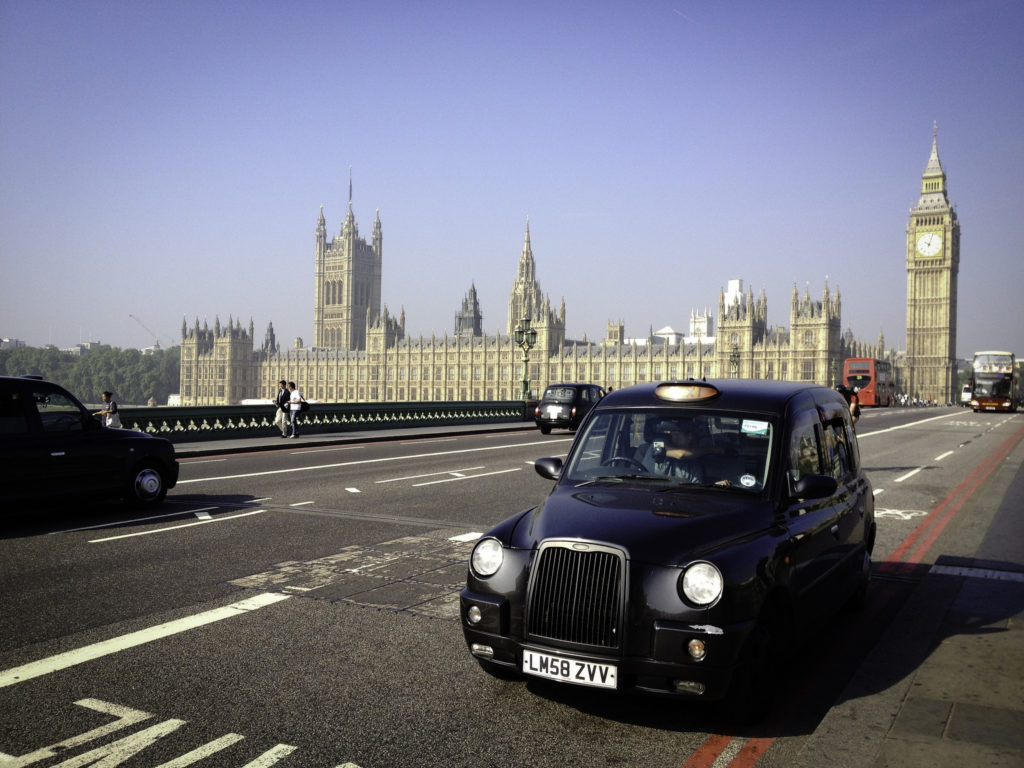London’s black cabs are easily recognized and a bit of a city attraction. However, one thing which people visiting the capital might sometimes fail to notice is the amount of moped riders zipping around the capital with a map fixed to the handlebars, occasionally stopping to make notes or mark something on the map. These are future cabbies in training, taking part in something which is known as ‘the knowledge’. It can take around five years for someone to gain all the information necessary to pass the examination. Licensed London Taxi Drivers are required to be aware of almost every road and place of interest in the main London area; that is anywhere within a six mile radius of Charing Cross- a major railway station which is moments away from ‘King Charles Island’; the official center of the capital (in Trafalgar Square).
When Hyde Park hosted the Great Exhibition in 1851 it became clear that many of the (horse-drawn) cab drivers in the city did not know their way around all the major points, so an examination was introduced to ensure a minimum standard. At the same time, regulation of licences had been placed under the control of the Metropolitan Police who wanted to better control who could drive a cab. Today, the process begins with what are known as the blue book runs, coming, as they do, from a blue book. Candidates need to learn 320 routes from the book which are a list of places and directions to get from one point to the other in the quickest most direct route. Once they have completed the runs they will then be going out and learning as many points as they can. Points are, quite simply, “points of interest” such as St Paul’s or the Langham. Often, someone will get in a taxi and only know the place they want to go and not the street – so knowing the points is vital (and possibly answers the question as to whether or not ‘the knowledge’ is relevant in the age of GPS).
In total there are 25,000 streets and 20,000 landmarks and places of interest in the six mile radius of Trafalgar Square. The first-part of the examination process is a self-assessment of some 80 routes to show that candidates are on the right track. These are marked by the candidate themselves and they do not need to disclose the score. Generally, this is done some 6 months after beginning the process. Within two years of starting, candidates must take a written test (Section 2) which tests the knowledge of the routes in the Blue Book. Candidates need to give the shortest possible route between the start and finish points of three routes. The second section will test knowledge of points that should have been encountered when learning the Blue Book runs. There is a list of 25 points and for each one the candidate will be given four possible locations and need to identify the correct one.
And then it starts to get tricky. Stages 3-5 are one-to-one oral examinations, known as appearances. As they progress from one stage to another the intervals between examinations will become shorter. Initially, examinations will be eight weeks apart, reducing to three weeks at the advanced stage. All appearances are conducted by Knowledge of London Examiners with the first appearance lasting approximately 30 minutes. Subsequent appearances will last up to 20 minutes. Each examination will involve the examiner asking the driver to state the location of two specified points of interest. This can be a street, a square, etc. or a named building, in other words anywhere that a taxi passenger might ask to be taken. Having given the correct locations of the two points they will be asked to describe the shortest possible route between the two (there are four of these at each appearance). As a final twist, upon completing Stage 5 all London based applicants are required to learn the 25 suburban routes. Of these routes 21 radiate from the edge of the six-mile radius to the outskirts of Greater London and four from Heathrow Airport. Once this is all done, then the famous green badge can be awarded.
So, when you visit London on your EF tour then it might be worth jumping in a black cab. Usual etiquette dictates that any conversation with a cab driver is based on three themes – the weather, how busy they’ve been and if they’ve had anyone famous in their cab recently. So, you are now armed with a fourth theme, something they should deservedly be proud to talk about. Finally, tradition dictates that a cabbie gives a free ride to the first real fare they pick up – so you never know your luck.
Source of examination system details: Transport for London
Related articles

